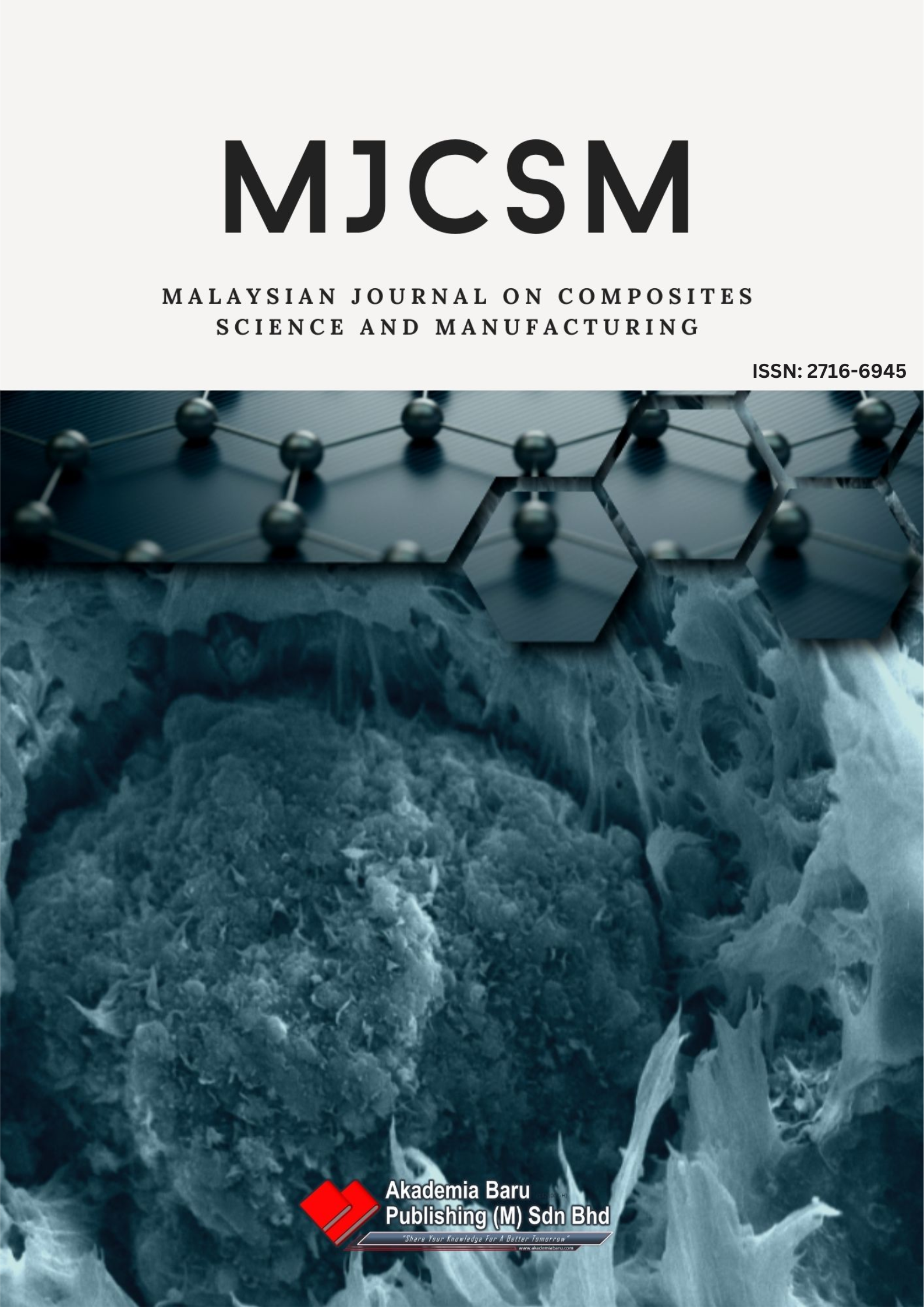Impact of Water Absorption on Tensile Strength: A Comparative Study of Jute Fiber Composites with Various Fiber Content
DOI:
https://doi.org/10.37934/mjcsm.12.1.114124Keywords:
Composite, Jute Fiber, Weathering, Water Absorption, Fracture SurfaceAbstract
The study focuses on replacing environmentally harmful synthetic materials with natural, renewable, and biodegradable jute fibers in Bangladesh. The hand-layup method incorporates Long jute fibres unidirectionally in an epoxy resin matrix. The primary goal of this research is to examine the effects of different fiber volume fractions on the tensile strength of the composite and how that strength is affected by the composite’s water absorption behavior following two months of weathering in water. The reduction in the tensile strength of weathered samples is attributed to the loss of fibres' structural integrity upon water absorption compared to raw samples. After being exposed to the water, the tensile strength of a 5% fiber composite sample drops by around 16.43%, whereas an epoxy sample with 15% fiber reinforcement drops by about 28.93%. The interactions between the fibers and the epoxy matrix, as well as the morphology of the fibers following fracture, were analyzed by SEM for both raw and weathered samples. Fiber-matrix debonding and fiber swelling due to water absorption and voids are observed in weathered specimens, whereas perfect fiber-matrix bonding is evident in raw composites.
Downloads












